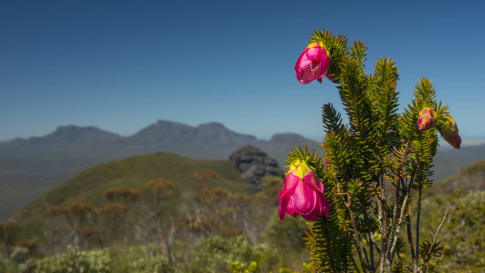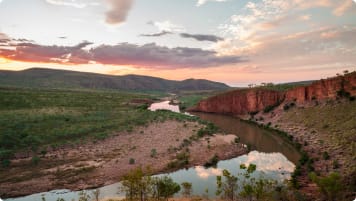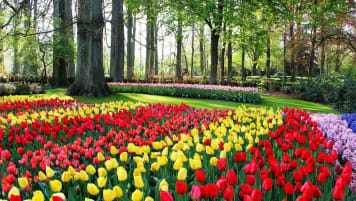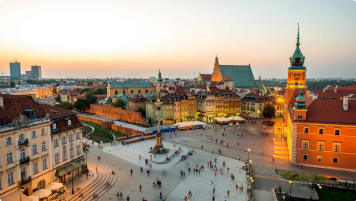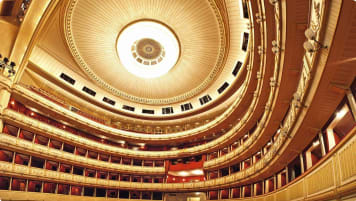Wildflowers tour of Western Australia
Escorted small group tour for senior and mature travellers as a couple of solo traveller. Upto 12 people of WA's Wildflower regions including Esperance and the Fitzgerald river National park. Local guides and program leader share knowledge about this fascinating region whilst in bloom.
From A$12,250AUD
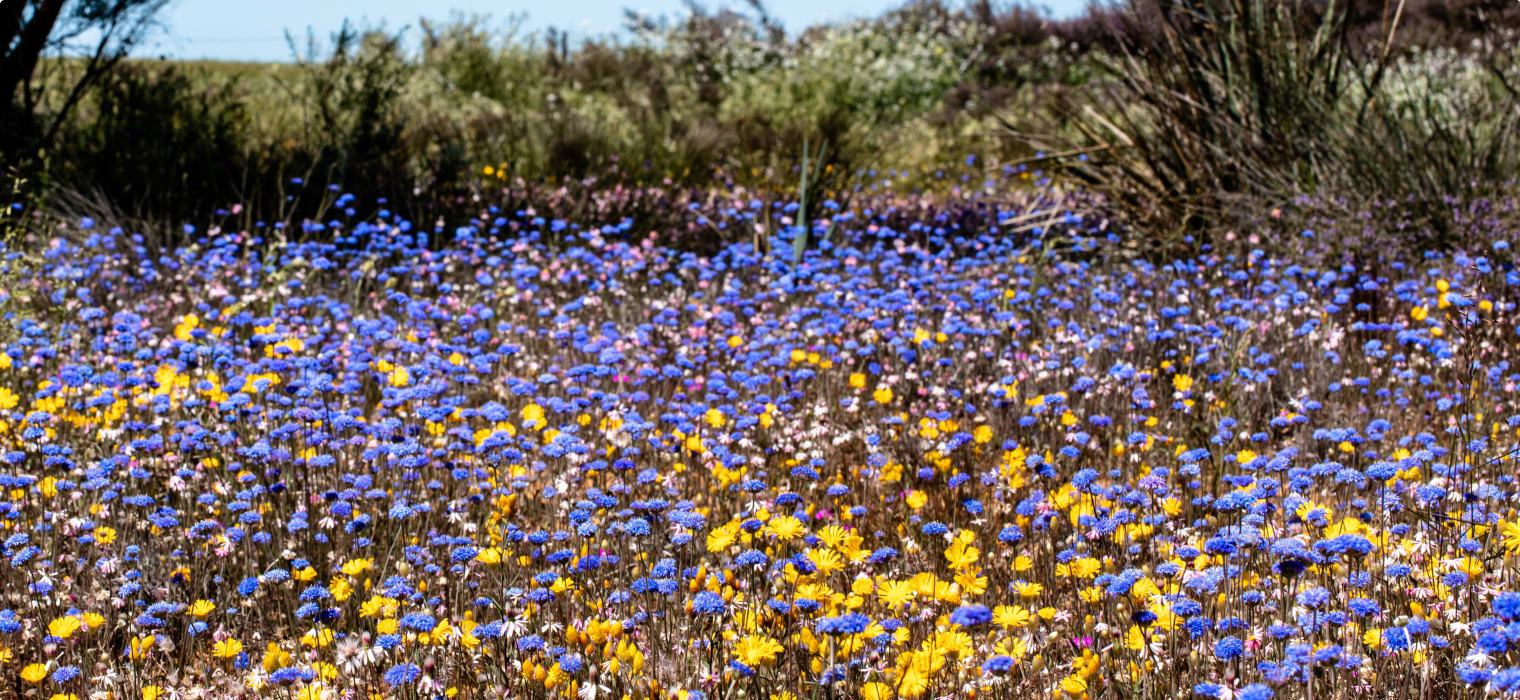
Highlights
- 1. Travel along the Golden Pipeline Heritage Trail, through Western Asutralia's Eastern Goldfields.
- 2. Travel along the Golden highway and spend two nights in Kalgoorlie.
- 3. Explore the South West Coast Esperance and the acclaimed Fitzgerald National park for endemic wildflowers only on the coast
- 4. Visit the historic settlement of Albany and the ANZAC museum.
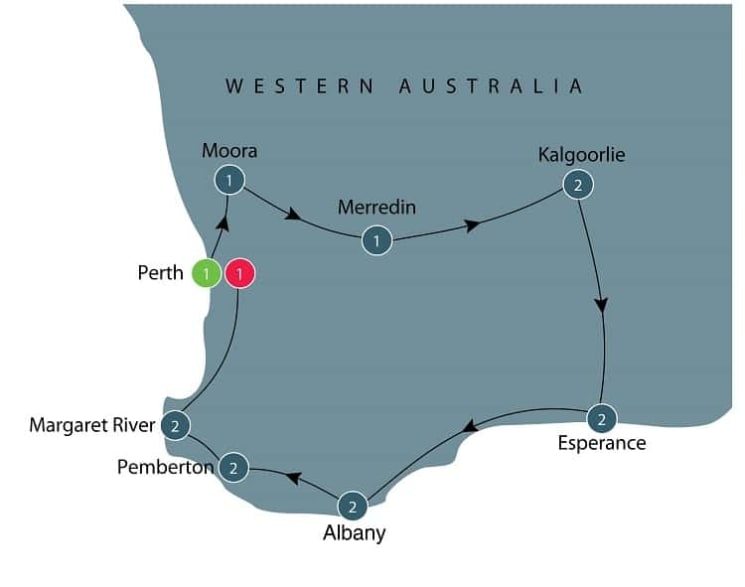
Departure Dates
| Departure Date | Price |
|---|---|
| 26 August 2024 Ends 09 September 2024 • 15 days A$12,250 Twin A$13,995 Single Available | Selected |
| 09 September 2024 Ends 23 September 2024 • 15 days A$12,250 Twin A$13,995 Single Available | |
| 16 September 2024 Ends 30 September 2024 • 15 days A$12,250 Twin A$13,995 Single Available | |
| 25 August 2025 Ends 08 September 2025 • 15 days A$12,850 Twin A$14,650 Single Available | |
| 08 September 2025 Ends 22 September 2025 • 15 days A$12,850 Twin A$14,650 Single Available | |
| 15 September 2025 Ends 29 September 2025 • 15 days A$12,850 Twin A$14,650 Single Available |
Escorted small group tours of Western Australia Wildflowers.
The wildflower collection in Western Australia's wildflower country is one of the largest on Earth. This wildflower collection of plant species in southwest Western Australia represents the longest unbroken evolutionary sequence of plant species on the planet! With more than 12,000 wildflower species, over 60% of which are found nowhere else on the planet. These wildflowers colour the landscapes from coast to forest and city to outback to be Australia's biggest wildflower display every year. Wildflower season is from June to October each year. Australia's South West is a wave of colour across the landscape and the state offers an interactive wildflower tracker to monitor the flowering of the green kangaroo paw of the grevillea in West Australia. Odyssey is offering the opportunity to jexperience this ina small group environment. Odyssey Traveller small group tour of Western Australia wildflowers for senior travellers, allows you to explore and learn about Australia's Golden Outback and Western Australia's unique wildflowers.
This, like all Odyssey Traveller small group tours is limited to 15 people.
For wildflower enthusiasts, this is an opportunity to see learn and photograph a collection of Western Australia's unique wildflowers for a 15-day wildflower escorted tour for senior and mature travellers in a small group of up to 15 people often accompanied by local guides to assist with discussion and identification of the collection of Western Australian wildflowers seen. We travel along the west coast, through the wheatbelt, across natural landscape of the golden outback plains, walk trails in the National park (s) the deserts and salt lakes, see ancient granite outcrops, wild woodland and then on the South West coast see some of the brightest white sand beaches in the world as we tour and view this year’s wildflower season across Western Australia.
Nambung National Park, Lesueur National Park & Wildflower Way.
This small group wildflowers tour of Western Australia starts its tour from Perth city, travelling North West, towards Geraldton along the coast on the Perth to Exmouth highway, to arrive at the Nambung National Park to view the pinnacles. We continue on to Cervantes where we stop to visit Lake Thetis. It is estimated that this body of water became isolated from the sea approximately 4800 years ago when sea levels dropped and coastal dunes formed to create the lake. The lake is one of only a few places in the world with living marine stromatolites, or 'living fossils'. Stromatolites are one of the longest-living forms of life on this planet. They can be traced back 3.5 billion years to the early Archean eon. Modern stromatolites were first discovered in Shark Bay, Australia in 1956 and throughout western Australia in both marine and non-marine environments. From this primitive yet evolutionary life form visit we travel onto Lesueur National Park to commence the wildflower tour.
Lesueur National Park is regarded as one of the most significant reserves for flora conservation in Western Australia. For wildflower enthusiasts, there are several botanical species of Wildflower that cannot be found anywhere else in the world and have been included on an endangered list in this national park. It is home to over 900 plant species – 10 per cent of Western Australia ’s known flora – including acacias, hibbertias, leschenaultias, melaleucas, gastrolobiums. There are many different orchid varieties present, such as spider orchids pink enamel, purple enamel, cowslip orchid, blue lady, white spider and donkey orchid species. Your walk along the wildflower trail will bring you into contact with some of the rarest and finest wildflowers in this national park. In spring several varieties of kangaroo paw are predominant. The National Park is also home to an abundance of wildlife with over 100 species of birds that rely on the wildflower flora for their survival. On our wildflower tour of the national park, we take a walk through key areas of the park to observe and discuss the wildflower species observed. In the afternoon, this small group wildflower tour of Western Australia's golden outback travels across the country to follow the eastern segment of the Wildflower Way. We join at Three Springs and head south stopping at some, but not all, of the 15 identified wildflower country stops on the road to Wubin.
Merredin, and the 'Wheat Belt' (West Australian mallee)
This wildflower tour travels across the Wheatbelt (or 'the heartlands'). Though locals refer to the area as the 'Wheat Belt', much of the terrain here is mallee country. ‘Mallee woodlands’ have been listed by the Australian Department of Environment and Energy as one of the 32 ‘Major Vegetation Groups’ of Australia. It is defined by the predominance of the mallee eucalyptus, a stocky eucalyptus with several stems, which grows on semi-arid soil. Mallee country spreads in a belt across the south of Australia, centring around the Murray River in western Victoria and eastern South Australia, and on the Eyre Peninsula. In Western Australia, the Mallee begins north of Albany, spreading east towards Esperance and onward to the Nullarbor Plain. It does not touch the coast until the Great Australian Bite Begins. Mallee areas share a Mediterranean climate of hot, hot summers, and cooler winters, and often are defined by an absence of fresh groundwater.
Unlike the (geologically) youthful terrain of the Victorian and South Australian mallee, the Western Australian mallee is the result of ancient geological processes. The mallee is part of one of the oldest exposed landscapes on earth: a 600-million-year-old plateau, which had been part of the supercontinent Gondwana. While minor uplifts caused the Stirling and Ravensthorpe Ranges, the landscape has remained remarkably stable. This long time without inundation or glaciation gave Western Australian flora long time to evolve in diverse ways to deal with the nutrient-poor soils, leading to the incredible biodiversity we see today.
Though European explorers would at first see the Mallee as a 'desolate' country, Aboriginal peoples lived in Mallee lands for tens of thousands of years before settlement. There is evidence of human occupation in the area 48, 000 years ago. The traditional owners of the land - the Nyungar, Ngadju, and Mirning - negotiated a country without fresh groundwater by living near granite outcrops, which caught rain water and preserved it in wells. Giant ceremonial and trading meetings were a common feature of life, as the Mallee peoples traded stone weapons and local foods in exchange for honey from the coast, and ochres from the desert. This group enjoys a talk about country from the Nyungar people. Then travel down the golden highway arriving in Merredin on the Golden Highway, where We stay overnight. Merredin was a key railway junction for pastoralists in the 19th century. Today, the agricultural land around Merredin produces 40% of Western Australia's wheat quota.
The Golden Highway to Kalgoorlie-Boulder
Leaving Merredin we head East on the Golden Highway, as we travel along the highway, we should see plenty of the renowned everlastings close to the roadside. The journey takes us through the dry red landscapes associated with outback Western Australia. It would not be unusual to see Western Australian wildflowers in bloom along the sides of the highway as we travel east. This landscape and its climate have allowed much of the gold rush to be visually removed there was during the gold rush from 1887 over 50 towns up in the Eastern goldfields now dominated by Kalgoorlie. The crazy idea of piping water from Perth to Kalgoorlie was completed in 1903 becoming a lifeline for the towns along the Golden Highway where the pipe was laid. Kalgoorlie feels like a frontier town, "the wild west" according to the Lonely Planet guidebook. Since 1893 the area of Kalgoorlie- Boulder has produced over 50 million ounces of gold, one of only 4 districts in the world to have reached such a milestone. The group spends two nights in Kalgoorlie visiting the historic places and mines that enable you to gain a reasonable understanding of this part of Western Australia.
Esperance
We drive south now, to the Southwest to stay in Esperance for two nights to complete the remainder of this wildflowers tour of Western Australia following the coast back to Perth city. The trip along the coast back to Perth is expected to be a highlight for wildflower enthusiasts as we see many endemic wildflowers unique to this part of Australia. The extraordinary variety of plant and wildflower species and the habitat threats to their survival qualify the South West Ecoregion as one of the world’s 36 Global Biodiversity Hotspots. Western Australian wildflowers of the South West evolved over millennia, surviving changing climatic conditions and natural disasters, and adapting to every ecological niche for us to observe today. For example, over 60 species of Banksia have been recorded in the southwest and only one of these grows naturally elsewhere (Australian National Botanic Garden 2012). Eighty percent of the 8000+ species found in the South West can be found nowhere else on Earth, making this section of this wildflower tour unique.
In Esperance there is always a succession of flowers blooming for wildflower enthusiasts to discover during the wildflower season; the peak period of the wildflower season is September and October when the finest wildflowers typically are in flower. This peak coincides with the annual Esperance wildflower festival. As Visitors on this wildflower tour, we will see Wildflowers in a substantial quantity at Helms Arboretum and along the Dempster Head walk trail along the Great Ocean Drive. The Esperance Wildflower Trail travels through some of Western Australia’s most spectacular rural and coastal scenery. It takes in the untouched Fitzgerald River National Park which we spend time in on our way to Albany. Cape Le Grand National Park is also on the wildflower trail. Helms Arboretum is another stop on this wildflowers tour of Western Australia. During wildflower season, you’ll be able to spot up to ten different varieties of orchids in the arboretum. Ken Mills, a local botanist also recommends driving past the plantation in the arboretum through to the heathland at the back where there are also many wildflowers to be spotted.
Cape le Grand National Park is known for its stunning beaches, it is also well worth a visit for the wildflower season. Just 50km east of Esperance, the park offers a wildflower trail that will take you through beautiful wildflower country. Wildflower species readily seen in the National Park include the banksia, kangaroo paws, grevilleas, and the stunning orange flowers of the WA Christmas Tree ( Nuytsia floribunda ).
Fitzgerald River National Park
Fitzgerald River National Park is a stop wildflower enthusiasts will be interested in making our trip from Esperance to Albany. The Fitzgerald River National Park is recognized as one of the most botanically significant parks in Australia, with nearly 20% of Western Australia’s flora species found here. Many of the plants are endemic and, as yet, not all are documented. There are flowers in evidence all year round, however, Spring is the best time to view all of the region’s wildflower species. This whole region as well as the National Park is teeming with some of the finest wildflowers, many of which are found nowhere else in the world. Nearly twenty percent of WA’s flora species are found in this park, including the beautiful and unique Qualup Bell.
Albany, Mt Barker & Stirling ranges National Park
Albany is the small group tour's base when it explores habitats around Mt Barker and in the Stirling Ranges National Park. Hundreds of orchid species reside around Mount Barker and the Porongurups and Stirling Range National Parks. Mount Barker is incredibly rich and diverse in wildflower species and is recognized as one of Australia's premier locations to view a range of orchids and other spectacular spring wildflowers. The Park during wildflower season is a remarkable botanical reserve noted for its distinctive rugged beauty and collection of wildflowers. Grass trees, pea flowers, leschenaultias, blue smoke bush, scarlet banksia, and many orchid varieties are just a few of the wildflower plant species to be found in this area. Agricultural pastures are carpeted in a yellow carpet of freshly blooming Canola, flowers at every turn and numerous orchid and other wildflower species turn on a magnificent show in numerous locations. There are over 1500 species of plants in the Stirling Ranges alone with over 80 species being endemic including the famous mountain bells (Darwinias). In the Stirling ranges as well as viewing a different set of Western Australia's unique wildflowers during the wildflower season, we take a walk up Bluff Knoll which at 1098m is the highest and most spectacular peak in South West, Western Australia.
Before the wildflowers tour of Western Australia departs Albany for Pemberton the group will have time to visit the National ANZAC Centre, a memorial to the ANZACS. It was from Albany on the 1st November 1914, that the first group of ANZAC troops on their way to the battlefields of the First World War departed Australia.
Pemberton
Pemberton is the next base for the group in the Southwest. We may also break to take a walk in the treetops of some of the tallest trees on earth. The Valley of the Giants Treetop Walk gives you a bird's eye view of ancient red tingles (Eucalyptus jacksonii) - trees that occur nowhere else in the world and whose origins trace back to Gondwana in the bushland of the Walpole-Nornalup National Park. Pemberton is known for the tall karri trees of Gloucester National Park, including the Gloucester Tree which we do visit. In the old-growth Karri forests around Pemberton, over 30 different orchid species can be found, as well as several species of wattle, clematis, and vines. This area forms part of the Bibbulmun Track, Western Australia's great walk, which passes through a variety of ecosystems and landscapes on the way from Perth to Albany.
Cape Leeuwin & Margaret river
After Pemberton we travel across to spend a night in the Margaret River region. On our way, we detour to stop at Cape Leeuwin which is the most south-westerly mainland point of the Australian continent. Margaret River is famous for its wines and there will be time to learn about the wines of Margaret River region. From Margaret River we travel along the coast North towards Perth city and stop several times around Busselton to seek out and observe wildflower species of the Margaret River region. The 2000-hectare Ludlow Tuart forest national park is the largest remaining area of pure Tuart forest in the world. Here the Orchid features prominently in the wildflower species list in the park including the Cape spider orchid.
The Ambergate reserve contains at least 326 species of native. A four-kilometer walk trail provides access through all parts of the reserve where you’ll see orchids, such as Blue Lady, rare Verticordia, and great Christmas tree displays. The group will also stop at The Whicher Range which has an amazing collection of small and colorful spring wildflowers to see just inside the bush line. We then continue on to arrive in Perth late afternoon.
Kings Park Perth.
On our last full day of the tour, we'll make our way back to Perth and if time permits we'll visit Perth's Kings Park Bushland. This is wildflower Perth style. It showcases 1,700 unique native species and a dazzling display of wildflowers in spring, celebrated with the annual Kings Park Festival in September. Two-thirds of Kings Park are protected as managed bushland and provides an important haven for visitors and native biodiversity. There are a series of walking tracks and designated pedestrian/cycle paths through the Kings Park bushland that allow visitors the chance to appreciate Kings Park's unique flora, fauna and fungi. It is a great asset to be able to display Wildflower Perth each year. As these are Western Australia's unique wildflowers curated and displayed in the botanic garden.
Our small group wildflower tour of Western Australia will come together again for a farewell dinner in the evening.
For all the articles Odyssey Traveller has published for mature aged and senior travellers, click through on this link.
Articles about Australia published by Odyssey Traveller:
- The Kimberley: A Definitive Guide
- Uncovering the Ancient History of Aboriginal Australia
- Aboriginal Land Use in the Mallee
- Understanding Aboriginal Aquaculture
- Mallee and Mulga: Two Iconic and Typically Inland Australian Plant Communities (By Dr. Sandy Scott).
- The Australian Outback: A Definitive Guide
For all the articles Odyssey Traveller has published for mature aged and senior travellers, click through on this link.
External articles to assist you on your visit to Western Australia:
Gallery
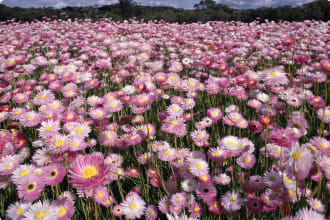








Itinerary
15 days
Day 1: Perth
Accommodation: Crown Plaza Perth or similar
Make your own way to our hotel in Perth. Late afternoon we meet for a welcome briefing where our Program Leader will introduce all members of the group followed by a welcome dinner.
Day 2: Moora
Accommodation: Moora Hotel or similar
We start our tour from Perth city, travelling north west towards Geraldton along the coast on the Perth to Exmouth highway to arrive at the Nambung National Park to view the Pinnacles Desert. We continue on to Cervantes where we stop to visit Lake Thetis. It is estimated that this body of water became isolated from the sea approximately 4800 years ago when sea levels dropped and coastal dunes formed to create the lake. The lake is one of only a few places in the world with living marine stromatolites, or ‘living fossils’. Stromatolites are one of the longest living forms of life on this planet. They can be traced back 3.5 billion years to the early Archaean eon. Modern stromatolites were first discovered in Shark Bay, Australia in 1956 and throughout western Australia in both marine and non-marine environments. From this primitive yet evolutionary life form visit we travel onto Lesueur National Park to discover a remarkable diversity of vegetation and landscapes. Lesueur is one of the most significant reserves for flora conservation in Western Australia, with over 900 plant species, 122 native bird species, many of which rely on the flora for their survival, and 52 reptile species. We will walk through key areas of the park to identify and examine the wildflowers. Our stop for the night is in the popular wheatbelt town of Moora, on the banks of the Moore River.
Nambung national park and The Pinnacles Desert contains thousands of limestone pillars. The pillars are the weathered and eroded fragments of limestone beds composed of deposited marine organisms such as coral and molluscs. Some of the tallest pinnacles reach heights of up to 3.5m above the yellow sand base. The different types of formations include ones which are much taller than they are wide and resemble columns—suggesting the name of Pinnacles
Lesueur National Park covers 26,987 hectares and is recognised for its outstanding conservation, landscape and recreational importance. It is home to over 900 plant species – 10 percent of Western Australia’s known flora – including acacias, hibbertias, leschenaultias, melaleucas, gastrolobiums. There are many different orchids, such as pink enamel, purple enamel, cowslip, blue lady, white spider and donkey orchids. In spring several varieties of kangaroo paw are predominant.
There are a variety of vegetation types in the park. The exceptionally diverse low heath, called Kwongan by Aborginal people, covers a large portion of the park. Creek lines and low areas have woodlands of wandoo, redgum and banksia.
Landforms in the park vary from salt lakes and remnant coastal dunes in the north-west through to laterite ridges in the east. The flat-topped laterite mesas of Mount Lesueur and Mount Michaud are features of the park.
Birds and reptiles are abundant in the park. Carnaby’s cockatoo is among the 122 species of native bird found in the park. There are 52 reptile species. The park is particularly rich is geckoes and legless lizards. As with plants and birds, many of the reptiles in the park found here are at the southern or northern limits of their range.
Group Dinner this evening.
Day 3: Merredin
Accommodation: Merredin Hotel or similar
Today we will follow part of two historically and botanically designated routes, heading first north on the Midlands Route to Three Springs and cross east to Perenjori and then south to Wubin and Dalwillinu that marks the end (or start) of the Wildflower Way. Wildflowers flourish in every conceivable type of terrain, hospitable or inhospitable, we’ll stop along the way as needed to inspect and observe the variety of flowers in the local towns and on the side of the road. Perenjori area offers vistas of pink, yellow and white everlastings. Buntine granite rocks with scenic views.
We’ll pause in the wheatbelt town of Wubin for a break and lunch (own arrangements) before continuing the short distance south to Dalwillinu which marks our turnoff point on the Wildflower Way as we travel southeast to Merredin where we stay overnight.
Merredin was a key railway junction for the pastoralists. It was also an important pump station on the Golden Pipeline, a water pipeline with a colourful history, running between Mundaring Weir in Perth and Kalgoorlie-Boulder. The project was commissioned in 1896 and completed in 1903, and today remains the longest steel freshwater pipeline in the world. In 1968 part of the pipeline was damaged by WA’s most significant earthquake, in Meckering, where the faultline is still visible. Today, the agricultural land around Merredin produces 40% of Western Australia‘s wheat quota.
Group evening meal this evening.
* The correct spelling of the generic name, Lechenaultia, is open to some argument. It was named after Leschenault de la Tour, a botanist who visited Australia in 1802-3. However, when botanist Robert Brown first published the name in 1810 he spelled it Lechenaultia, and the spelling without the ‘s’ is considered valid by Australian taxonomists.
Day 4: Kalgoorlie
Accommodation: The View on Hannans or similar
Leaving Merredin we start by visting the nearby Totadgin Conservation Park to examine its “inselberg”, see which varieties of wildflowers are in flower here, and spot some of the myriad native birds and then we head east on the Golden Highway, keeping a close eye on the roadside where we should see plenty of the renowned everlastings.
The journey to Kalgoorlie-Boulder journey takes us through the dry red landscapes associated with outback Western Australia, past so-called trees of Spanish leather, gimlet gums or Eucalyptus salubrus. It was in 1989 that the Kalgoorlie and Boulder names became officially merged. The name Kalgoorlie is derived from the Wangai word Karlkurla or Kulgooluh, meaning “place of the silky pears”, but originally the site was called Hannan’s Find, after Patrick Hannan filed a goldmining Reward Claim in 1893.
Before Kalgoorlie we will pause in Southern Cross and Coolgardie. The first town is the centre for the Yilgarn Shire (Yilgarn is the Aboriginal word for white stone or quartz) and is indeed named for the celestial Southern Cross, which guided prospectors Tom Riseley and Mick Toomey to their providential gold discovery in 1888. Their debt to the night skies is also acknowledged in all the street names of the town which evoke various stars and constellations. Southern Cross is the last town on the eastern edge of the wheatbelt and the first town on the Eastern Goldfields. It was also, for a time, the end of the railway line, and in the late 1880s was considered the mother town of Coolgardie and the grandmother of Kalgoorlie. Yilgarn gives its name to the Yilgarn Craton, which constitutes the bulk of the WA landmass. A craton is an old and stable part of the Earth’s two topmost layers, and the first large cratonic landmasses formed during the Archaeon eon. The country around Southern Cross boasts some of the oldest granite rock formations in the world. A little further along the Highway is the Karalee reservoir. In the 1880s and 90s steam trains needed water, and the two huge granite outcrops at Karalee were used as part of an ingenious method of harvesting low annual rainfall to fill a substantial reservoir. We then traverse the Goldfields Woodlands National Park, a stop on the Golden Pipeline Heritage Trail, and enjoy the wildflower displays of the kwongan sandplain heaths. The park lies within the Great Western Woodlands, which is the largest remaining area of intact Mediterranean climate woodland left on Earth. Some of these trees are propagated and studied at the Kalgoorlie Arboretum. The park also has remnants of the historic Kalgoorlie woodlines, narrow gauge railway lines built for the gold rush.
Coolgardie was once the third largest town in WA, and at its peak 700 mining companies based in the town were registered with the London Stock Exchange. Coolgardie also held the main Muslim community in the colony due to the numbers of Afghan cameleers who transported food and water to the goldfields. By the early 1920s it had become a ghost town, but in 1995 the world’s second largest existing gold nugget was found in a Coolgardie creek bed: a whopping 25.5 kg. It is currently on display at the Perth Mint.
Group Dinner this evening.
Day 5: Kalgoorlie
Accommodation: The View on Hannans or similar
Today as we visit historic sites and mines, and delve into the Australian goldrush legacy, we will understand why Kalgoorlie still feels like a frontier town of the “wild west”. Goldmining is still a major industry, and today employs about one quarter of Kalgoorlie’s workforce. Since 1893 the area of Kalgoorlie- Boulder has produced over 50 million ounces of gold, one of only 4 districts in the world to have reached such a milestone. The area around the original find by Paddy Hannan has been called the Golden Mile, and the world’s richest square mile of earth. We will explore how some of these riches were spent in the town, and how its reputation for lawlessness almost led to Kalgoorlie becoming part of a new state called Auralia. Present-day gold mining continues at the Fimiston Super Pit, Australia’s largest open-cut gold mine at 3.6 km long, 1.6 km wide and over 600 metres deep, which was created in 1989 by consolidating all the original underground mines. Over 1000 men and women are employed to operate the mine 24/7. The daily blast is an impressive experience, and on the last two International Women’s Days the blast was coloured pink.
Day 6: Esperance
Accommodation: Comfort Bay Inn Bay of Isles or similar
We leave Kalgoorlie to head south to the spectacular coastal region of Esperance. Halfway between the two supremely contrasting environments lies Norseman, a town surrounded by salt lakes. In the Eocene period, around 40 million years ago, the climate was wetter and rivers flowed eastward from Kalgoorlie across the Nullarbor to the sea. The vast salt lakes are what remain of the ancient river systems, and they return to life in heavy rains. These great white expanses are also deemed worthy of mining, primarily to produce sulphate of potash fertiliser from the potassium-rich salts, but even to extract gold and other minerals by means of specialised drilling technology. Norseman is the administrative centre for the Shire of Dundas, which covers an area bigger than Tasmania. Equally importantly Norseman is the gateway to the Nullarbor Plain, and the first WA town for travellers journeying from South Australia. The town is named after a horse whose owner was indeed a Norseman from the Shetland Islands. A proud statue memorialises the horse’s “discovery” of the first gold nugget in the area. Recognition is also given to another indispensable goldfields beast of burden: the camel, and we will note the extra wide streets which allowed camel trains to turn. While mining technology has been transformed – the Norseman Gold Mine is Australia’s longest continuously running gold mining operation – much of Norseman’s architecture remains unchanged. The Nullarbor is the largest limestone karst landscape on Earth, and also offers the longest golf course in the world, the first hole being in Ceduna, SA, and the 18th hole 1365 km away in Kalgoorlie – holes 14 and 15 are in Norseman. Wildflowers continue to bloom around us, and nearby Beacon Hill offers a panoramic view of the country. Further south we pass through the little town of Salmon Gums, these particular eucalypts being a prominent landmark in the settlement’s early days. Along with two acacia species the Eucalyptus salmonophloia is credited with allowing the development of the goldfields because its durable timber was used to make railway sleepers and mining shaft supports. The Salmon Gum’s high density was viewed as the second strongest in Australia, and is still appreciated by craftsmen, and used in musical instruments. The Coolgardie-Esperance highway passes the town of Scaddan, called originally Thirty Mile for its distance from Esperance, but then named more interestingly after the 1911-1916 premier of WA, John “Happy Jack” Scaddan. His reforming government invested greatly in developing the wheatbelt and constructing railways, looking after lowly paid workers, and setting up state owned enterprises.
Group Dinner this evening.
Day 7: Esperance
Accommodation: Comfort Bay Inn Bay of Isles or similar
In Esperance there is always a succession of flowers blooming for enthusiasts to discover during the wildflower season; the peak period of this season is September and October when the finest varieties typically are in bloom. This peak coincides with the annual Esperance Wildflower Festival, which this year will run from 22-26 September with the theme, “Flowers & Feathers: Friends or Foes?”.
We will revel in unique floral beauties at Helms Arboretum, on the Dempster Head walking trail along the Great Ocean Drive, and at Cape Le Grand National Park. The Arboretum has an enormous area of WA’s native shrubs and wildflowers, as well as a collection of pines from various countries, and we may be able to spot up to ten different varieties of orchid.
Cape le Grand National Park is known for its pristine coastline, and boasts Australia’s whitest beach, Lucky Bay, which is set against a beautiful seascape of 110 islands of the Recherche Archipelago. Just 50km east of Esperance, the park offers a wildflower trail that will take us through bursts of colour. Wildflower species readily seen in the National Park include the banksia, kangaroo paws, grevilleas, and the stunning orange flowers of the WA Christmas Tree (Nuytsia floribunda).
Esperance is also known for two other natural elements: wind and wave. In 1987 Salmon Beach hosted Australia’s first commercial wind farm, and today 20% of Esperance’s electricity is supplied by local turbines. The Esperance wave, known in the mega-surfing community as Cyclops, is indeed a monster: said to be the world’s heaviest wave with massive amounts of water folding and precipitating above a sharp coral reef.
Day 8: Albany
Accommodation: Ibis Styles or similar
We continue on the Esperance Wildflower Trail as it travels through some of WA’s most spectacular rural and coastal scenery, and spend time in the untouched Fitzgerald River National Park on our way to Albany. The Fitzgerald River National Park is recognised as one of the most botanically significant parks in Australia, with nearly 20% of Western Australia’s flora species found here. Many of the plants are endemic and, as yet, not all are documented. There are flowers in evidence all year round, however Spring is the best time to view around 1,800 of the region’s flowering plants, like the winsome Qualup Bell. This whole region as well the National park is teeming with some of the finest wildflowers, many of which are found nowhere else in the world.
Albany is the oldest colonial settlement in WA, founded on 26 December 1826, as a military outpost of New South Wales as part of a plan to forestall French ambitions in the region. The town has a role in the ANZAC legend, being the last port of call for troopships departing Australia in the First World War, and we will visit the National ANZAC Centre before we leave Albany.
Group Dinner this evening.
Day 9: Albany
Accommodation: Ibis Styles or similar
From Albany we explore the different WA wildflower habitats around Mt Barker and in the Stirling Ranges National Park. The south west corner of WA has been internationally recognised as a ‘biodiversity hotspot’ – one of only 34 worldwide and 2 in Australia – for its extensive collection of wildflower species. The Stirling Range National Park is at the heart of this wildflower hotspot, and is recognised as one of the most important wildflower areas in the world, containing over 1500 species – 87 of which are not found anywhere else in the world. Particular highlights include banksia, dryandras, Queen of Sheba orchids, and Darwinia Collina, better known as ‘Mountain Bell’, which is endemic only to a few small areas in the Stirling Ranges National Park, and thus is considered an endangered species by the Australian Government. The National Park encloses the only mountain range within southern WA. Rugged peaks here reach more than 1000 metres above sea level, and the park features sharp cliff faces, long gullies, and magnificent views. It is the only place in WA where snow occasionally falls. The Stirling Range is also noted for its unusual cloud formations – the Aboriginal name for the area, Koi Kyenunu-ruff, translates as ‘mist rolling around the mountains’. We will take a walk up Bluff Knoll, which at 1098m is the highest and most spectacular peak in WA’s South West. During wildflower season the Park is a remarkable botanical reserve: grass trees, pea flowers, lechenaultias, blue smoke bush, scarlet banksia and many orchid varieties are just a few of the plant species to be found in this area.
We also visit Porongurup National Park and do a Granite Skywalk to enjoy stunning, panoramic views of the coastline, the Stirling Ranges, and surrounding farmland and vineyards. Porongurup is renowned for its acacia and hovea, as well as native fauna, including grey kangaroos.
The town of Mt Barker, the centre of the Shire of Plantagenet, likewise has a splendid view of the mountain ranges and sweeping views of the surrounding countryside.
Day 10 : Pemberton
Accommodation: Kingsley Motel or similar
This morning we will visit the National ANZAC Centre. It was from Albany on the 1st November 1914, that the first group of ANZAC troops on their way to the battlefields of the First World War departed Australia. The Centre offers visitors an immersive experience by following the personal stories of 32 Anzac-related characters, from soldiers to nurses, many of whom departed from the Port of Albany. Their lives can be followed from pre-war life and recruitment through conflict in Gallipoli, the Middle East and on the Western Front, to post-war life. From the ANZAC Centre we can look over to the Torndirrup Peninsula, which shelters Albany from the Great Southern Ocean. The south side of the Peninsula features massive, ancient granite outcroppings which have been worn away by the ocean since the land broke off from Antarctica when Australia was part of the supercontinent Gondwana.
We then head west into the Walpole-Nornalup National Park to marvel at its Valley of the Giants. These giants are ancient Red Tingle trees (Eucalyptus jacksonii) – trees which occur nowhere else in the world and whose origins also trace 65 million years back to Gondwana. On the ground below these arboreal giants live Gondwanan arthropods and funghi. Above in the forest canopy is a wonderful tree top walk which will give us truly a bird’s eye view of this unique remnant of natural history.
Pemberton is known for the tall Karri trees (Eucalyptus diversicolor) of Gloucester National Park, including the Gloucester Tree, which has a fire lookout platform in its upper branches. In the old growth Karri forests around Pemberton, over 30 different orchid species can be found, as well as several species of wattle, clematis and vines. Pemberton is also recognised as one of the premier cool-climate wine regions in Australia, and hosts many wineries in the region. The town itself is considered so well-preserved from its saw milling settlement days that it was chosen as the setting for the 2016 Australian film adaptation of Jasper Jones.
Group Dinner this evening.
Day 11: Pemberton
Accommodation: Kingsley Motel or similar
Today we continue exploring the wildflowers around Pemberton such as Greater Beedelup & Warren NP where we can view delicate Lobelias and Scaevolas line the waterways as well as Spider, Helmet and Midge Orchids. In Donnelly River area there’s a great display of a wide variety of Peas and Bearded Heaths, Banksias, Adenanthos, and others. Heading south towards Windy Harbour we stop at Mt. Chudalup, where in late September the area blooms with beautiful displays of Verticordia, Melaleuca and Bearded Heaths. Mossy swards become a carpet of Pink Petticoats, everlastings and after a fire, Pink Bunny Orchids.
The Southern Forest region is famous for it’s biodiversity with more than 2500 species of plants including over 100 terrestrial orchid species.
The peak for wildflower season in Pemberton is mid-September to late October with Northcliffe and Windy Harbour presenting a longer season from mid-September through to November but flowering plants can be found all year round.
Day 12: Margaret River region
Accommodation: The River Hotel or similar
From Pemberton we travel across national park and state forest to spend a night in the Margaret River region. On our way we detour to stop at Cape Leeuwin which is the most south-westerly mainland point of the Australian continent, and considered to be the point where the Indian Ocean meets the Southern Ocean. It was a Dutch vessel called the Leeuwin (“Lioness”) that charted some of the nearby coastline in 1622. This point is marked by Australia’s tallest lighthouse, built in 1895 and still an indispensable beacon.
Margaret River is famous for its wines and there will be time to learn about wines of Margaret River region as we visit a vineyard or two : sampling will be pure pleasure with a chauffeur standing by! The Margaret River itself rises in the Whicher Range – Margaret Whicher was the cousin of John Bussell, founder of Busselton – and merges with Warperup Creek which flows around the town, pools at the Barrett Street Weir, and eventually meets the ocean at Prevelly.
Group Dinner this evening.
Day 13: Margaret River region
Accommodation: The River Hotel or similar
Today we spend the full day exploring Margaret River region on walks with our local guides. We explore sections of the Cape to Cape track and learn more about the delicate environmental balance required to keep the local flora blooming with wildflowers.
There will be a pause for lunch (own arrangements) between our walks today and we end the day back at our accommodation with some free time rest or explore the town at your own pace.
Day 14: Perth
Accommodation: The Ibis Perth or similar
For our final day of wildflowers, we travel from Margaret River we travel along the coast north towards Perth city and stop several times along the way to seek out and observe wildflower species of the Margaret River region and beyond.
Our first stop is at Ambergate Reserve, located a few kilometeres out of Busselton. The Ambergate reserve contains at least 326 species of natives. A four-kilometre walk trail provides access through all parts of the reserve where you’ll see orchids such as Blue lady, rare Verticordia featherflowers, and shrubs with the unforgettable name of Snottygobble. Another rare and endangered species is the Southern Brown Bandicoot or Quenda., where we view the the longest timber piled jetty in the southern hemisphere.
We continue via a brief stop to view the 1.8km jetty at Busselton, the longest timber piled jetty in the southern hemisphere.
We travel via the scenic route t0 the 2000 hectare Ludlow Tuart Forest National Park, the largest remaining area of pure tuart forest in the world. The tuart, Eucalyptus gomphocephala (“club-shaped head”), is one of the six forest giants of Southwest Australia, and some specimens in the park are over 10 m in girth. It grows only on the coastal limestone of the Swan coastal plain. Here the orchid features prominently in the wildflower species list in the park including the Cape spider orchid, Synapheas and Dryandras.
When we arrive in Perth, if time permits we will visit the Kings Park bushland and Botanic Garden in the afternoon. It showcases 1,700 unique native species and a dazzling display of wildflowers in spring celebrated with the annual Kings Park Festival in September. Two thirds of Kings Park are protected as managed bushland and provides an important haven for visitors and native biodiversity. There are a series of walking tracks and designated pedestrian/cycle paths through the Kings Park bushland that allow visitors the chance to appreciate Kings Park’s unique flora, fauna and fungi.
In the evening we will come together for a farewell dinner.
Day 15: Perth
Tour concludes after breakfast.
Includes / Excludes
What’s included in our Tour
- 14 nights accommodation.
- 14 breakfasts, 3 lunches, 9 dinners.
- Transport by modern and comfortable 4wd or other vehicle suitable for the highway conditions.
- Entrances and sightseeing as specified.
- Services of Tour Leader for the duration of tour
- Detailed Preparatory Information
What’s not included in our Tour
- Return Domestic airfares
- Comprehensive travel insurance.
- Items of a personal nature, such as telephone calls and laundry
Participants must be able to carry their own luggage, climb and descend stairs, be in good health, mobile and able to participate in 3-5 hours of physical activity per day, the equivalent of walking / hiking up to 8 kilometers per day on uneven ground.
Book now
Make it a private tour
Easing your journey
Crossing international borders with restrictions
The list of requirements to travel internationally has changed and will continue to change for several years. Odyssey is here to assist you in managing your way through these requirements:
For more information see our Crossing international borders with restrictions page.
Book With Confidence
If less than 30 days before your tour starts you are unable to travel as a result of Government travel restrictions, Odyssey Traveller will assist you with a date change, provide you with a credit or process a refund for your booking less any non-recoverable costs.
See Terms and conditions for details.
Peace of Mind Travel
The safety of our travellers, tour leader, local guide and support staff has always been our top priority and with the new guidelines for public health and safety for keeping safe for destinations around the world, we’ve developed our plan to give you peace of mind when travelling with us.
See Peace of Mind Travel for details.
Reading List Download PDF
Guide to the Wildflowers of Western Australia 3/e: Over 1150 Plant Species illustrated
Simon Nevill
Western Australia boasts over 13,000 plant species and it can be quite overwhelming to the flower-seeking visitor to the state. This book helps the reader identify wildflowers visually, also placing them in areas where there is a higher probability of seeing them. Maps help the traveller find the best locations for wildflowers and accompanying text discusses the best time to visit. The book illustrates over 1150 species, so there should be ample opportunity to help find both the common and some of the not-so-common flowers.
Common Wildflowers of Western Australia
Simon Nevill
In Western Australia, one of the richest flora regions of the world, botanists to date have identified over 10,000 vascular plants. It is understandable that a visitor to this huge state would find the quantity and variation of wildflowers simply overwhelming. This small publication attempts to illustrate some of the more easily identifiable common and not so common wildflowers (215 species are illustrated). Please note that this is a re-issue, and stock should be available in July 2018.
The Way it Was: A History of the Early Days of the Margaret River Wine Industry
Peter Forrestal, Ray Jordan
The Margaret River region of Australia’s south-west is internationally renowned for its award-winning wines. There are now more than 200 wineries, predominantly boutique style, in the region, producing more than 20% of Australia’s premium wine market.
The Way It Was tells the story of the early days of the region’s wine industry, from the first plantings by Dr Tom Cullity in 1967 through an informative text and many illustrations.
Invisible Country: Southwest Australia: Understanding a Landscape
Bill Bunbury
When Europeans first settled in Australia, the land withheld many of its secrets from these new arrivals. There were broad rivers, wide plains, and tall forests, all of which to European eyes suggested promising sites for settlement. However, to many of the new settlers, the 'First Australians' (the Aboriginal people) were a puzzle. They moved freely through the country they knew intimately. What few settlers realized then was that the Aboriginal people and the land they lived in were indistinguishable. Invisible Country describes the environmental changes that have occurred in southwestern Australia since European settlement, through four case studies of the development of local rivers, forests, and coastal plains. These stories - compiled through extensive conversations with farmers, ecologists, traditional owners, and others who rely on the land - are book-ended by an examination of the historical perspective in which these changes have occurred. It is a reminder that the land owns the people, not the other way around, and this is the beginning of a conversation about understanding and caring for the land that all Australians are fortunate to live in. *** Librarians: ebook available [Subject: Australian Studies, Environmental Studies, History
Plant life on the Sandplains in Southwest Australia: A Global Biodiversity Hotspot
Hans Lambers
Southwest Australia is a region increasingly recognised for its high levels of biodiversity and endemism, and is recognized as one of the world's top 25 'biodiversity hotspots' based largely on its highly diverse and endemic flora. Plant Life on the Sandplains in Southwest Australia has been assembled with current research and understanding about the southwestern Australian flora, the greatest richness of which is on the sandplain, especially on the most nutrient-impoverished soils. To be able to conserve threatened species, the animals that depend upon them, and the habitats they live in, we need to understand their functioning in the past and present, to protect them for the future.






